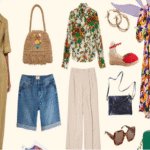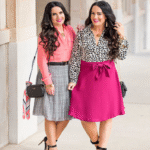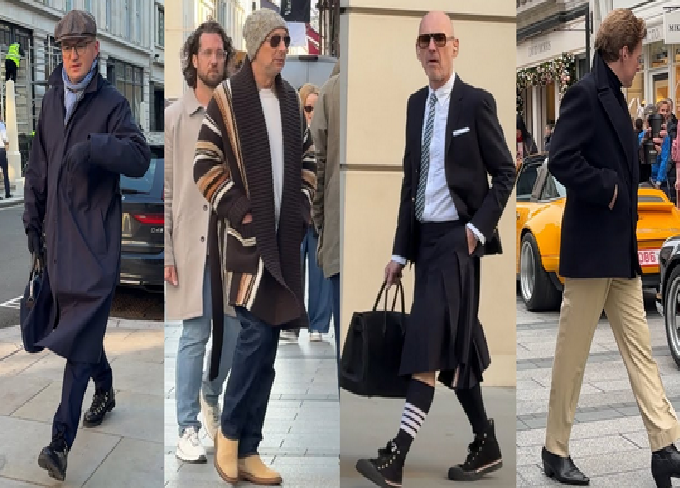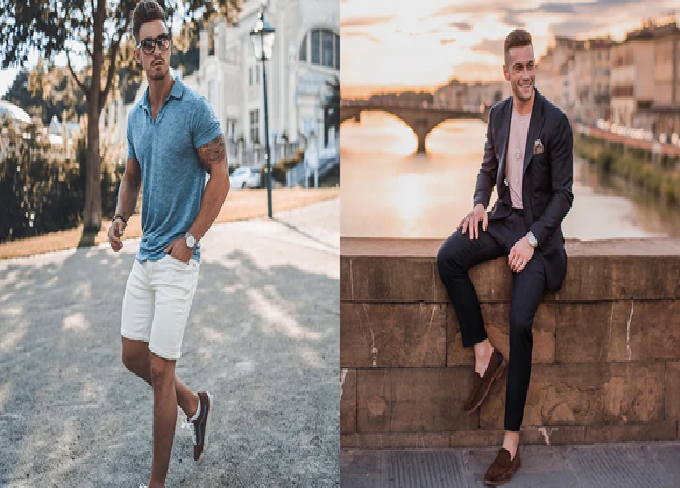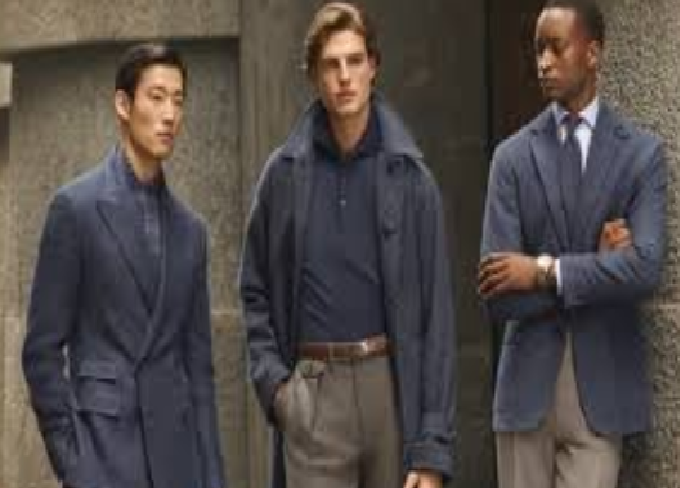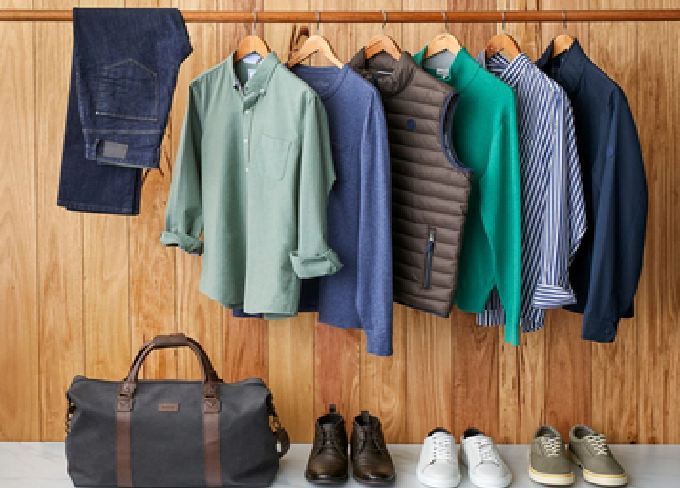First impressions are often made before a single word is spoken — and your outfit plays a major role in that. Dressing smart isn’t about wearing expensive brands or following every new fashion trend; it’s about knowing what works for you, maintaining good grooming habits, and mastering the art of presentation. Whether you’re heading to a business meeting, a date, or a casual outing, dressing smart can boost your confidence, improve your presence, and set you apart from the crowd.
This complete guide will walk you through practical fashion tips every man should follow to look sharp, stylish, and put-together on every occasion.
1. Understanding What It Means to Dress Smart
Before diving into wardrobe choices, it’s essential to understand what “dressing smart” really means. Dressing smart is about looking refined and intentional — not overdressed or flashy. It’s about combining comfort, style, and appropriateness.
A smart dresser knows how to adapt to any situation while maintaining a polished appearance. It’s not limited to formal wear; even casual looks can be smart when styled correctly. For instance, a simple white shirt paired with chinos and loafers can look as sophisticated as a tailored suit when worn with confidence and neatness.
2. Fit is Everything
No matter how expensive or trendy your clothes are, they won’t look good if they don’t fit you properly. Fit is the foundation of smart dressing.
-
Avoid baggy clothes: They make you look sloppy and shorter.
-
Avoid overly tight clothes: They can look uncomfortable and restrict movement.
-
Tailor your outfits: A well-fitted outfit highlights your body shape and adds instant elegance.
Key areas to pay attention to:
-
Shoulders of shirts and jackets should align perfectly with your natural shoulder line.
-
Trousers should sit comfortably on your waist and not bunch up at the bottom.
-
Sleeves should end right at your wrist bone, not before or far below it.
When in doubt, visit a good tailor — it’s an investment that transforms your look.
3. Build a Timeless Wardrobe
Trends come and go, but a timeless wardrobe never fails. Focus on investing in classic pieces that can be mixed and matched for years.
Essential wardrobe staples for smart dressing:
-
White Dress Shirt: Clean, crisp, and versatile for formal or casual wear.
-
Navy Blazer: Works with jeans, chinos, or dress pants for an instantly sharp look.
-
Dark Denim Jeans: Avoid overly distressed jeans; go for slim or straight-fit dark washes.
-
Tailored Suit: A classic black, navy, or charcoal suit is a must-have.
-
Chinos: Perfect for smart-casual settings; beige, navy, or olive are great options.
-
Plain T-Shirts: High-quality cotton T-shirts in white, grey, and black for layering.
-
Smart Shoes: Oxfords, brogues, or loafers can elevate any outfit.
A timeless wardrobe saves you from confusion and ensures you always look well-dressed without too much effort.
4. Choose Quality Over Quantity
Smart dressing isn’t about owning a closet full of clothes — it’s about owning the right clothes. It’s better to have ten well-made, well-fitted pieces than thirty low-quality ones.
Here’s what to look for when buying quality clothing:
-
Fabric: Natural fabrics like cotton, wool, and linen breathe better and last longer.
-
Stitching: Check for tight, even stitches; loose threads are a sign of poor quality.
-
Buttons and Zippers: Quality clothes often have reinforced buttons and strong zippers.
High-quality clothes may cost more initially but they last longer, maintain shape, and always look refined.
5. Master the Art of Layering
Layering adds depth, character, and versatility to your outfit. It’s not just for keeping warm — it’s a style technique that shows you understand fashion.
Tips for layering smartly:
-
Keep the thinnest layer (like a T-shirt or shirt) closest to your body.
-
Use contrasting textures, such as cotton shirts with wool sweaters.
-
Stick to a consistent color palette to maintain harmony.
-
Avoid over-layering — two to three layers are enough for most outfits.
For example, you can wear a crisp white shirt, a light sweater, and a blazer on top — it’s a look that’s effortlessly stylish and perfect for many occasions.
6. Learn the Basics of Color Coordination
Color coordination can make or break an outfit. The key is to understand which colors complement your skin tone and how to balance bold and neutral tones.
Basic color tips:
-
Neutral colors like white, grey, navy, beige, and black are timeless and versatile.
-
Earth tones like olive, brown, and tan work well for smart-casual looks.
-
Add pops of color through accessories like ties, pocket squares, or socks.
-
Avoid wearing more than three colors in one outfit — simplicity is the essence of sophistication.
A navy blazer with a white shirt and khaki chinos, for example, is a classic color combination that always looks sharp.
7. Pay Attention to Shoes
Your shoes can say more about you than you think. A well-dressed man always wears clean, polished shoes that complement his outfit.
Essential types of shoes every man should own:
-
Oxford Shoes: Ideal for formal occasions and business wear.
-
Loafers: Perfect for smart-casual events and easy to slip on.
-
Derby Shoes: Slightly less formal than Oxfords but still classy.
-
Sneakers: Go for minimal, clean designs for a smart-casual touch.
-
Boots: Chelsea or chukka boots add rugged elegance to winter outfits.
Remember to match your shoes with your belt, and always keep them clean and polished.
8. Don’t Forget Accessories
Accessories complete your outfit and show attention to detail. However, they should enhance, not overpower, your look.
Smart accessories include:
-
Watches: A classic wristwatch instantly adds sophistication.
-
Belts: Match your belt color with your shoes for a cohesive look.
-
Pocket Squares: A subtle yet classy addition to a blazer or suit.
-
Ties and Tie Clips: Perfect for formal and business settings.
-
Sunglasses: Choose a style that fits your face shape.
Avoid over-accessorizing — less is more when it comes to dressing smart.
9. Prioritize Grooming and Hygiene
No outfit can save you if your grooming is neglected. A smart dresser always pays attention to personal hygiene and grooming habits.
Grooming checklist for men:
-
Maintain a neat haircut and trim facial hair regularly.
-
Keep nails clean and trimmed.
-
Use deodorant and a mild cologne (avoid overpowering scents).
-
Keep your skin healthy with basic skincare — cleanse, moisturize, and protect from sun.
-
Ensure your clothes are clean, ironed, and free of lint.
Good grooming complements smart dressing and enhances your overall image.
10. Dress for the Occasion
Smart dressing also means dressing appropriately for the setting. You should never look out of place, whether it’s a wedding, office, or casual event.
Examples:
-
Formal Events: Suits, dress shirts, and leather shoes.
-
Business Casual: Blazer, chinos, and loafers.
-
Casual Outings: Well-fitted jeans, polo shirt, and clean sneakers.
-
Evening Events: Dark tones, sleek jackets, and smart accessories.
Always consider the venue, time, and company when planning your outfit.
11. Keep Your Clothes Well-Maintained
A man who dresses smartly also takes care of his clothes. Proper clothing maintenance ensures longevity and a fresh appearance.
Tips to maintain your clothes:
-
Follow washing instructions on labels.
-
Use wooden hangers to maintain shape.
-
Store shoes with shoe trees.
-
Iron or steam your clothes before wearing them.
-
Rotate your outfits to avoid excessive wear.
Proper care reflects self-respect and makes your outfits look new for longer.
12. Understand the Power of Minimalism
Smart dressing doesn’t mean extravagant dressing. Minimalism — simplicity with intention — often looks the most elegant.
Avoid loud patterns, excessive branding, or over-accessorizing. Stick to clean lines, solid colors, and subtle details. A simple, well-fitted shirt with a watch can make a stronger impression than a flashy outfit.
Minimalism also makes dressing easier, as every piece can be paired with others effortlessly.
13. Confidence Is the Best Outfit
No matter how good your outfit is, it won’t look right if you don’t carry it with confidence. Stand tall, maintain good posture, and smile — your attitude completes your look.
Confidence isn’t arrogance; it’s self-assurance in how you present yourself. Dressing well helps build that confidence, creating a positive cycle of appearance and self-belief.
14. Experiment Within Your Style
While classic pieces are essential, don’t be afraid to experiment and add your personal touch. Style should evolve with you.
Try different textures, patterns, or accessories — just ensure they align with your personality and the occasion. The goal is to create a unique signature style that represents you.
15. Invest in Seasonal Essentials
Dressing smart also means adapting to the seasons while maintaining elegance.
Summer: Light fabrics like cotton and linen, pastel colors, and breathable shoes.
Winter: Wool coats, scarves, and leather boots.
Spring: Light layering and soft tones.
Autumn: Earthy colors, jackets, and comfortable knitwear.
Knowing how to dress appropriately for each season shows fashion awareness and practicality.
Conclusion: The Lifelong Habit of Smart Dressing
Dressing smart is more than a fashion goal — it’s a lifestyle choice that reflects discipline, respect, and self-awareness. Every man can look sophisticated with the right mindset, grooming, and wardrobe essentials.
Remember, it’s not about following every trend or buying designer clothes; it’s about dressing intentionally, choosing quality over quantity, and maintaining consistency. When you dress smart, you project confidence, competence, and class — and that never goes out of style.




